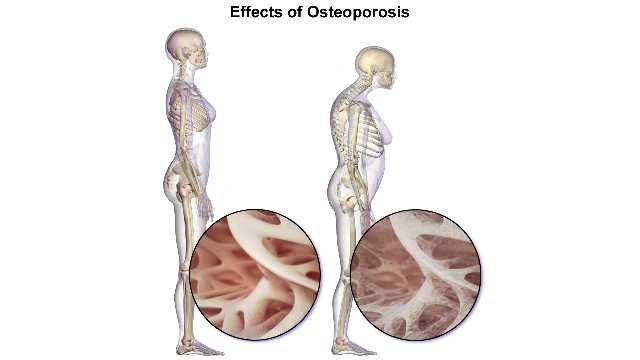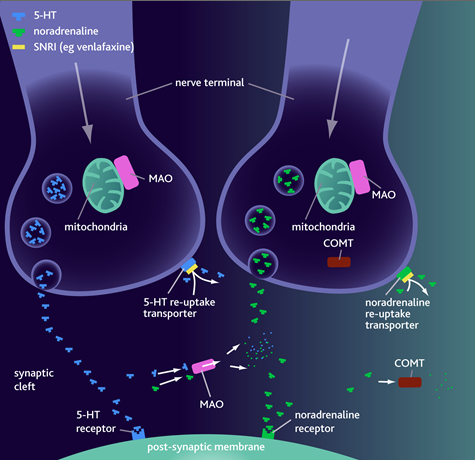+1(209) 348-9544
order@myessayservices.com
+1(209) 348-9544
order@myessayservices.com
![]() Are you in High School, College, Masters, Bachelors or Ph.D and need someone to help in your homework? All you need is to ask for research paper help written by a specialist in your academic field. When you buy an essay online from My Essay Services, we offer you an original, nil plagiarized and unique paper written by a dedicated writer who is PhD or Masters qualified. MyEssayServices.com is an experienced service with over 9 years experience having delivered over 83,000 essays over the years.
Are you in High School, College, Masters, Bachelors or Ph.D and need someone to help in your homework? All you need is to ask for research paper help written by a specialist in your academic field. When you buy an essay online from My Essay Services, we offer you an original, nil plagiarized and unique paper written by a dedicated writer who is PhD or Masters qualified. MyEssayServices.com is an experienced service with over 9 years experience having delivered over 83,000 essays over the years.

 Osteoporosis is a condition whereby bones become brittle and weak. Even mild stress or fall can result in a fracture, and this mostly occurs in the spine, hip or wrist. Bones should be replaced and constantly absorbed, and failure of new bones to keep up with the old bone that has been removed is what makes osteoporosis occur. Osteoporosis attacks both genders and all races are susceptible (Bruyère, 2014). However, Asian and White women are more at risk, especially after menopause.
Osteoporosis is a condition whereby bones become brittle and weak. Even mild stress or fall can result in a fracture, and this mostly occurs in the spine, hip or wrist. Bones should be replaced and constantly absorbed, and failure of new bones to keep up with the old bone that has been removed is what makes osteoporosis occur. Osteoporosis attacks both genders and all races are susceptible (Bruyère, 2014). However, Asian and White women are more at risk, especially after menopause.
Signs and Symptoms
Symptoms include backs pains, which are caused by a collapsed or fractured vertebra, frequent bone fractures, a slow loss of height, and a stooped posture.
Diagnosis of osteoporosis can be done by machines that measure the bone density using low X-ray levels (Kanis, 2014). This helps establish the mineral proportion contained in bones. This test is painless and simply involves the use of a scanner that is passed above the body. In most instances, it is only necessary to check a few bones, especially those located in the spine, hip or wrist to check if there is any risk.
Treatment
Bisphosphonates still remain the most preferred medications for osteoporosis for both genders. Examples include Zoledronic acid such as Zometa and Reclast, Ibandronate such as Boniva, Risedronate such as Atelvia and Actonel, as well as Alendronate such as Binosto and Fosamax. Other osteoporosis medications that are less common include Denosumab and Teriparatide. Teriparatide is particularly powerful because it helps stimulate new bone growth (Kaufman, 2014). It is administered by injecting it under the skin.
Side effects include difficulty when it comes to swallowing, abdominal pain, nausea or even an inflamed esophagus. However, if the medication is taken properly, there is a low risk of these side effects occurring. Bisphosphonates also come in injected forms, and these are meant to reduce stomach upsets. There have been fears, however, that if bisphosphonates are taken for an extended period, they might lead to rare problems, one of which is the cracking of the thighbones (Reginster, 2014). In other incidences, the thighbone could even break completely. It is, therefore, important that dental examinations be regularly taken when using bisphosphonates medication. In men, the disease causes a reduction in testosterone levels, and this process is often gradual. To help improve bone density, testosterone replacement therapy should be encouraged.
Risk factors
Risk factors for osteoporosis have been divided into hormone levels, unchangeable risks, dietary factors and lifestyle choices. Hormone levels that increase osteoporosis chances include sex hormones, especially estrogen levels reduction at menopause, thyroid problems, and other glands like adrenal and parathyroid glands. Unchangeable risk factors include sex, where women are more at risk, age, family history as well as frame size. Individuals with small body frames are more at risk because their bone mass is lesser. This condition worsens with age.
Dietary risk factors include low calcium intake, gastrointestinal surgery that reduces the stomach size and eating disorders (Shapiro, 2014). Anorexic individuals are more at risk. With regards to lifestyle choices, sedentary lifestyles and excessive alcohol and substance abuse increases osteoporosis risk. Other causes of osteoporosis include malabsorption where nutrients are not absorbed properly, chemotherapy that results in early menopause because of the toxic effect that it has on ovaries, and amenorrhea. It can also be caused by chronic inflammation, immobility from conditions such as stroke, as well as hyperthyroidism.
Prevention
For bones to be kept healthy throughout one’s life, certain steps would be helpful. Individuals have to participate regularly in exercises and Vitamin D and Calcium has to be taken in adequate amounts. About 1,000 mg of calcium should is necessary daily. Sources for this include calcium-fortified cereals such as oranges, dairy products that are low-fat, soy products, green leafy vegetables, as well as canned salmon. Sunlight remains the best option as far as Vitamin D is concerned (Soriano, 2014). However, food supplements can still be used for this purpose, especially for those individuals residing in high altitudes. Through exercises, strong bones are built, and slow ones are lost. Weight-bearing exercises should be combined with strength-training exercises for best results.
Consequences
Bone fractures caused by osteoporosis can cause considerable pain, and this can consequently reduce the quality of life that individuals lead. It could result in disability, and this could translate into lost workdays because the condition allows for very minimal movements. Patients suffering from osteoporosis will often need a long term care, preferably in a nursing home, and for elderly patients, this could come with the added risk of blood clots and pneumonia. There is also a high death risk associated with osteoporosis, and this is especially so for elderly women. The occurrence of one fracture quickly leads to other fractures, and this could easily spiral out of control (Kanis, 2014).
Living with osteoporosis
Various steps can be undertaken to reduce pain during osteoporosis, and consequently sped up recovery. They include cold and hot treatments like cold packs and warm backs, and using nerve stimulation techniques. Relaxation techniques can also come in handy with regards to this.
References
Bruyère, O. (2014). Monitoring of osteoporosis therapy. Best Practice & Research Clinical Endocrinology & Metabolism, 835–841.
Kanis, J. A. (2014). The application of health technology assessment in osteoporosis. Best Practice & Research Clinical Endocrinology & Metabolism.
Kaufman, J.-M. (2014). Current and future treatments of osteoporosis in men. Best Practice & Research Clinical Endocrinology & Metabolism.
Reginster, J. (2014). Efficacy and safety of currently marketed anti-osteoporosis medications. Best Practice & Research Clinical Endocrinology & Metabolism, 809–834.
Shapiro, J. R. (2014). Chapter 39 – Transient Migratory Osteoporosis in Osteogenesis Imperfecta. Osteogenesis Imperfecta, 359–370.
Soriano, R. (2014). Current and future treatments of secondary osteoporosis. Best Practice & Research Clinical Endocrinology & Metabolism, 885–894.
 The nursing profession is one of the most complicated fields of practice. In the current nursing profession, nurses are required to deal with their client’s problems even in the long term. Severe disease conditions may call for collaboration by different specialists to achieve success.
The nursing profession is one of the most complicated fields of practice. In the current nursing profession, nurses are required to deal with their client’s problems even in the long term. Severe disease conditions may call for collaboration by different specialists to achieve success.
The thesis of my essay is to analyze the medical situation of a thirteen-year-old patient with chronic abdominal pain. The situation call for different measured as covered by my essay.
Chronic abdominal pain condition is one of the most prevalent gastrointestinal disorders that affect children and teenagers. There are various types of this disease condition including the functional abdominal pain referred to as (FAP), and there is the irritable bowel syndrome (IBS). The functional abdominal pain (FAP) can lead to severe consequences for children. For instance, the disease can affect the nervous system making it vulnerable to pain, which may affect the axis of the brain-gut in the long-run. Most medical practitioners are uncomfortable with diagnosing the condition due to its complexity. However, with the help and collaboration of therapists, the condition can be maintained (Terkeltaub, 2012).
In my clinical situation, the situation seems complicated due to the negative blood work and CT scan reports. In this situation, I would engage gout therapists to help me with the patient. The condition manifests itself as functional abdominal pain. In functional abdominal pain therapy, the physiologist aims at alleviating the pain symptoms.
The treatment of the gout condition for the patient should be individualized and specified for the severity of the patient’s symptoms. In order for the therapists to fully diagnose the patient, he should analyze the hypnosis, cognitive-behavioral therapy and guided imagery. These will enable the therapist discover the source of the pain. These tests will enable the therapists evaluate the chances of psychological disorders. This is necessary because in most children cases, the abdominal pain condition may result to comorbid disorder, which is a psychological disorder (Terkeltaub, 2012).
Consequently, the situation would incorporate the professionalism of a pharmacologist. Pharmacologic therapies are aimed at discovering the source of the abdominal pain and the right prescriptions to relieve the pain. Professional pharmacologists target the specific receptors that are involved in the stress, noniception and neurogenic inflammation. Further, the pharmacology therapy should test for hyperalgesia. In this situation, if the therapist identifies the cause of the pain, they can administer the right drug that will relieve the pain. For instance, most pharmacologists prefer diagnosing abdominal pain patients with proton-pump inhibitors, serotonergic drugs, H(2) blockers and tricyclic antidepressants (Golan & Tashjian, 2012).
Further, after successfully seeking therapeutic help, medical practitioners should work on establishing the ideal preventive measures for the condition. Preventive measures increase the level of diagnosis success, and it limits the chances of a future situation regarding the patient condition. Thus, the medical practitioner should ensure that the patient receives wide levels of patient education relating to his conditions, and the best measures to take to ensure the healing process takes the right course (Buttarp, Trybulski, Polgar, Sandberg-cook, 2013).
Medical practitioners should offer more than mere doctor consultation services. According to advanced nursing practice principles, nursing practices are aimed at dealing with the medical problem in the long-term. Therefore, collaboration of major medical professionals is vital to ensure full treatment of the patient condition is achieved.
References
Terkeltaub, R. (2012). Gout and other crystal arthropathies. Philadelphia, PA: Elsevier/Saunders.
Buttarp, M., Trybulski,J., Polgar, B, P., Sandberg-cook, J., (2013). Primary Care. Elsevier Health Science Division ISBN: 9780323075015.
Golan, D. E., & Tashjian, A. H. (2012). Principles of pharmacology: The pathophysiologic basis of drug therapy. Philadelphia: Wolters Kluwer Health/Lippincott Williams & Wilkins.
What is the pharmacologic action of SSRIs?
 Selective Serotonin reuptake inhibitors (SSRIs) inhibits the reabsorption of serotonin, a brain neurotransmitter, hence altering the balance of serotonin at the synapses (Charney, 2013). They primarily affect serotonin neurotransmitters hence the name selective.
Selective Serotonin reuptake inhibitors (SSRIs) inhibits the reabsorption of serotonin, a brain neurotransmitter, hence altering the balance of serotonin at the synapses (Charney, 2013). They primarily affect serotonin neurotransmitters hence the name selective.
How are SSRIs different from SNRIs?
Selective Serotonin reuptake inhibitors (SSRIs) only inhibit the reuptake of serotonin, therefore described as mono-dissembling antidepressants (Edmunds, 2014). On the other hand, Serotonin and norepinephrine reuptake inhibitors (SNRIs) block the reabsorption of both serotonin and norepinephrine and are described as dual-dissembling antidepressants.
What is the pharmacologic action of tricyclic antidepressants (TCA)?
Tricyclic antidepressants inhibit the reuptake of biogenic amines norepinephrine and serotonin and hence making them more available at the synapses (Charney, 2013). Other neurotransmitters affected by TCA are; cholinergic, histamine and α1-adrenergic (Edmunds, 2014). This result to some side effects.
What are the toxicities associated with SSRIs?
The therapeutic to toxicity ratio of SSRIs is relatively high, meaning that compared to other antidepressants, they have less toxicity. Serotonin syndrome (SS) is the potentially lethal toxicity of these drugs when taken together with other serotonin reuptake inhibiting agents such as monoamine oxidase inhibitors (MAOIs) and lithium opioids (Edmunds, 2014).
How monitoring of patients receiving therapy from depression should happen? the first step in monitoring is establishing a therapeutic alliance for depression management. A weekly Psychiatric assessment of the patient help to detect any changes in behavior (Charney, 2013). Establishing an appropriate treatment setting, either at home or hospital where evaluation of the patient’s quality of life and related functional impairments will take place. Existing and potential barriers to treatment should be assessed, which may include; effects of therapy, specific patient needs and other ailments. The patient’s family should finally receive education on how to take care of the patient.
Are there any special considerations associated with using antidepressants for pediatric and geriatric patients?
Antidepressant treatment for pediatric patients should only start after a strict diagnostic evaluation and assessment of the benefits of the treatment over risks (Edmunds, 2014). Administration of medication should always be done as part of a treatment program also entailing interventions such as psychological, educational and social. Doctors should administer geriatric patients should with a lower dosage of SSRI antidepressants. Elderly patients suffering from dementia-related psychosis are more pre-disposed to death and other risks when treated with antipsychotic drugs (Charney, 2013). These patients are also less tolerant to serotonin syndrome. Those taking SSRIs like fluoxetine may experience low-sodium levels (hyponatraemia), potentially dangerous condition for geriatric patients.
What are the effects of antihistamines on the peripheral autonomic nervous system?
Antihistamines cause drowsiness, sedation and when taken by patients in high-dosage impair psychomotor performance of complex tasks (Beck & Shelton, 2012). These agents have mixed effects on the autonomic nervous system. Their anticholinergic properties cause dry mouth, rapid heart rate and low gastrointestinal activity. Over dosage of this agent largely affects hyper arousal where users have decreased vigilance and alertness.
What are the unintended side effects of antihistamines when used as hypnotics?
Antihistamines have different unintended side effects when used as hypnotics, depending on the drug and the patient (Edmunds, 2014). These side effects range from coma, cardiovascular collapse to death. Pyribenzamine causes dry mouth, nausea, gastrointestinal irritation and dizziness. Clemastine cases blurred vision, dry mouth and dizziness.
Older adults often use Tylenol PM, an OTC branded combination product with an antihistamine and analgesic. Common side effects and drug interactions that can result from using this with other drugs? How would you counsel patients using this?
Combination of antihistamines with other analgesics causes drowsiness, confusion and even headaches to elderly patients (Beck & Shelton, 2012). There are also risks of analgesic efficacy increase. Some other side effects associated with this medication are hypotension, blurred vision and flaccidity.
It is important for patients to inform the doctor whether they are taking over-the counter medication. They should also not take alcohol or engage in activities perceived to be hazardous activities such as driving or heavy manual work (Edmunds, 2014).
References
Beck, R. K., & Shelton, J. (2012). Pharmacology for the EMS provider. Clifton Park, NY: Delmar, Cengage Learning.
Charney, D. S. (2013). Neurobiology of mental illness. New York: Oxford University Press.
Edmunds, M.W. (2014). Pharmacology for the primary care provider: [Vital Source digital version]. St. Louis, Missouri: Elsevier.
Browse More Essay Topics 24/7/365 Support 11+ Yrs in Essay Writing Pay for Quality not Quantity Score that A+ Grade
Affordable Papers
Research Paper for Sale
Cheap Research Papers
Buy Term Papers
Buy Research Paper
Write My Paper
Buy an Essay
Cheap Essay Writer
Write my Essay
Thesis Help
Dissertation Help
Paper Writing Service
Pay for Homework
Pay for Research Paper
Do My Essay for Me
Pay for Essay
College Papers for Sale
Do My Homework for Me
College Essays for Sale
Buy Research Papers Online
Buy College paper
Client: "(Berlin, G.K., CA)"
Topic title:"Leadership shortfalls in Blue Chips"
Discipline: "Economics"
Pages: 5, (APA)
" Awesome, the writer delivered it as required by the professor. They also sent me a plagiarism & grammar report Wow!. I was worried about how the essay would turn up but this is exactly what wanted. Thank you and will be back with a longer essay"
Accounting Research Papers
Business Research Papers
Communication Research Papers
Computer Science Research Papers
Economic Research Papers
Film Studies Research Papers
Finance Research Papers
Geography Research Papers
History Essays
Psychology Research Papers
Political Science Research Papers
Nursing Research Papers
Mathematics Essays
Management Essays
Literature Essays
Law Essays
World Affairs Essays
Technology Essays
Sociology Essays
Science Essays
Religion Essays
+1(209) 348-9544
Terms
Privacy
Sitemap
Frequently Asked Questions
0% Plagiarism Guarantee
Money Back Guarantee
Revision Policy
